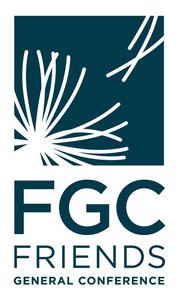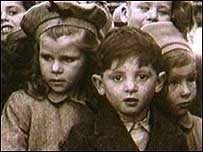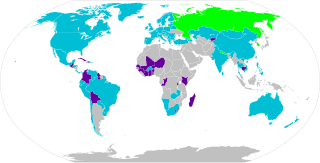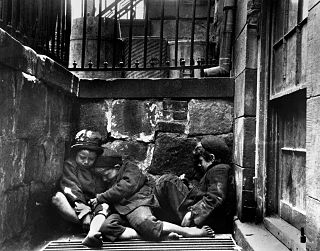Best interests or best interests of the child is a child rights principle, which derives from Article 3 of the UN Convention on the Rights of the Child, which says that "in all actions concerning children, whether undertaken by public or private social welfare institutions, courts of law, administrative authorities or legislative bodies, the best interests of the child shall be a primary consideration". Assessing the best interests of a child means to evaluate and balance "all the elements necessary to make a decision in a specific situation for a specific individual child or group of children".

Friends General Conference (FGC) is an association of Quakers in the United States and Canada made up of 16 yearly meetings and 12 autonomous monthly meetings. "Monthly meetings" are what Quakers call congregations; "yearly meetings" are organizations of monthly meetings within a geographic region. FGC was founded in 1900.

Foster care is a system in which a minor has been placed into a ward, group home, or private home of a state-certified caregiver, referred to as a "foster parent", or with a family member approved by the state. The placement of a "foster child" is normally arranged through the government or a social service agency. The institution, group home, or foster parent is compensated for expenses unless with a family member.
Children's rights or the rights of children are a subset of human rights with particular attention to the rights of special protection and care afforded to minors. The 1989 Convention on the Rights of the Child (CRC) defines a child as "any human being below the age of eighteen years, unless under the law applicable to the child, majority is attained earlier." Children's rights includes their right to association with both parents, human identity as well as the basic needs for physical protection, food, universal state-paid education, health care, and criminal laws appropriate for the age and development of the child, equal protection of the child's civil rights, and freedom from discrimination on the basis of the child's race, gender, sexual orientation, gender identity, national origin, religion, disability, color, ethnicity, or other characteristics.
International adoption is a type of adoption in which an individual or couple residing in one country becomes the legal and permanent parent(s) of a child who is a national of another country. In general, prospective adoptive parents must meet the legal adoption requirements of their country of residence and those of the country whose nationality the child holds.
The United States Children's Bureau is a federal agency organized under the United States Department of Health and Human Services' Administration for Children and Families. Today, the bureau's operations involve improving child abuse prevention, foster care, and adoption. Historically, its work was much broader, as shown by the 1912 act which created and funded it:
The said bureau shall investigate and report to [the Department of Commerce and Labor] upon all matters pertaining to the welfare of children and child life among all classes of our people, and shall especially investigate the questions of infant mortality, the birth-rate, orphanage, juvenile courts, desertion, dangerous occupations, accidents and diseases of children, employment, legislation affecting children in the several states and territories.
Foster children in Canada are known as permanent wards. A ward is someone, in this case a child, placed under protection of a legal guardian and are the legal responsibility of the government. Census data from 2011 counted children in foster care for the first time, counting 47,885 children in care. The majority of foster children – 29,590, or about 62% – were aged 14 and under. The wards remain under the care of the government until they "age out of care." This age is different depending on the province.
In the United States, adoption is the process of creating a legal parent–child relationship between a child and a parent who was not automatically recognized as the child's parent at birth.
Child protective services (CPS) is the name of an agency in many states of the United States responsible for providing child protection, which includes responding to reports of child abuse or neglect. Some states use other names, often attempting to reflect more family-centered practices, such as department of children and family services (DCFS). CPS is also sometimes known by the name of department of social services, though these terms more often have a broader meaning.
An unaccompanied minor is a child without the presence of a legal guardian.

Safeguarding is a term used in the United Kingdom, Ireland and Australia to denote measures to protect the health, well-being and human rights of individuals, which allow people—especially children, young people and vulnerable adults—to live free from abuse, harm and neglect.

The Oranga Tamariki Act 1989 or Children's and Young People's Well-being Act 1989 is an Act of the New Zealand Parliament that was passed in 1989. The Act's main purpose is to "promote the well-being of children, young persons, and their families and family groups." In June 2017, the New Zealand Parliament passed amendment legislation renaming the bill the Oranga Tamariki Act 1989.
The Child Welfare League of America (CWLA) is a 501(c)(3) charitable organization that coordinates efforts for child welfare in the United States, and provides direct support to agencies that serve children and families. The organization's vision is "that every child will grow up in a safe, loving, and stable family," and its primary objective is to "Make Children a National Priority". The CWLA is run by professionals in the children's services field. As a national organization it lobbies for both child protection, and delivery of services to children. It is the oldest child welfare organization in the United States.

The Hague Convention on Protection of Children and Co-operation in Respect of Intercountry Adoption is an international convention dealing with international adoption, child laundering, and child trafficking in an effort to protect those involved from the corruption, abuses, and exploitation which sometimes accompanies international adoption. The convention has been considered crucial because it provides a formal international and intergovernmental recognition of intercountry adoption to ensure that adoptions under the convention will generally be recognized and given effect in other party countries.
Joint Council on International Children's Services, founded in 1976, was a nonprofit child advocacy organization based in Alexandria, Virginia. The organization "work[ed] to end the suffering of children who live every day without the protection and love of a strong permanent and safe family. Our 142 Partners in 52 countries do the same."

Foster care is the term used for a system in which a minor who has been made a ward or a non-minor, typically aged 18-21, who volunteers for placement, is placed in a relative placement, a non-related extended family (NREFM) placement, a community family home, an institution, a group home (residential child care community, residential treatment center, etc. Relative, NREFM, and community caregivers certified by the state are typically referred to as "foster parents," "kin caregivers," "resource parents," or other local terms. The placement of the child is usually arranged through state or county social services. The institution, group home, or caregiver is reimbursed for the expenses related to caring for the child. The state via the family court and child protection agency stand in loco parentis to the minor, making all legal decisions, while the caregiver is responsible for the day-to-day care of the minor. Even while their child is in Care, typically birth parents retain Education and Medical rights and the right to contact with their child unless parental rights are terminated by the Court.

Adoption in the Philippines is a process of granting social, emotional and legal family and kinship membership to an individual from the Philippines, usually a child. It involves a transfer of parental rights and obligations and provides family membership. The Department of Social Welfare and Development (DSWD) defines adoption as a "socio-legal process of giving a permanent family to a child whose parents have voluntarily or involuntarily given up their parental rights."
The youth justice system in New Zealand consists of organisations and processes that deal with offending by children aged 10–13 years and young people aged 14–16 years. These differ from general criminal processes, and are governed by different principles.

Juvenile Justice Act, 2015 has been passed by Parliament of India amidst intense controversy, debate, and protest on many of its provisions by Child Rights fraternity. It replaced the Indian juvenile delinquency law, Juvenile Justice Act, 2000, and allows for juveniles in conflict with Law in the age group of 16–18, involved in Heinous Offences, to be tried as adults. The Act also sought to create a universally accessible adoption law for India, overtaking the Hindu Adoptions and Maintenance Act (1956) and the Guardians and Wards Act (1890), though not replacing them. The Act came into force from 15 January 2016.
Transnational child protection refers to the protection of children from violence, exploitation, abuse and neglect in an international setting. When a non-national child comes into contact with public authorities and service providers, a series of checks, assessments and immediate measures sets in to identify the child and to assess her or his situation. Article 19 of the UN Convention on the Rights of the Child provides for the protection of children in and out of the home, including in their country of origin, residence or a third country. Article 2 of the Convention provides for the right to non-discrimination, meaning children have the right to protection regardless of the national origin or status of the child or his or her parents or legal guardians.







